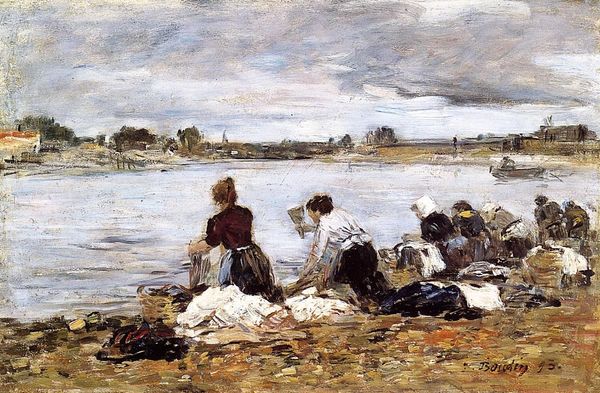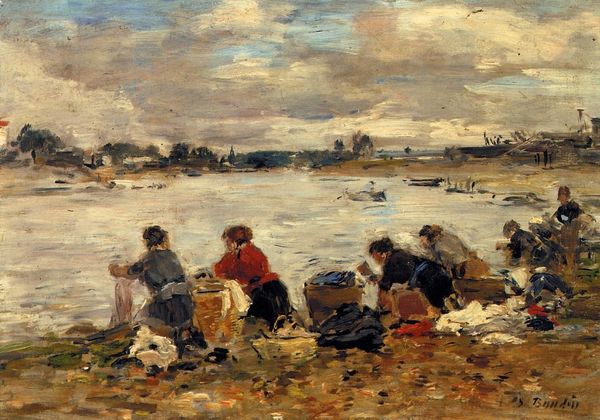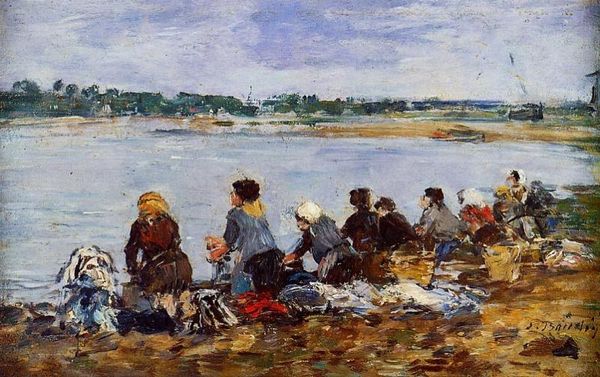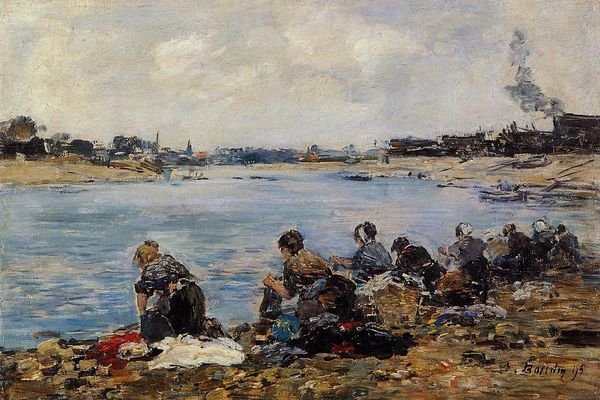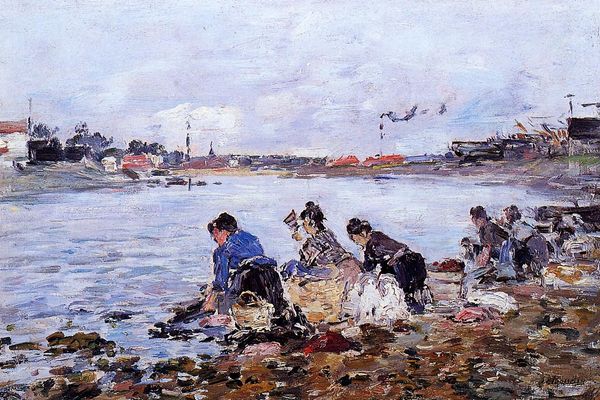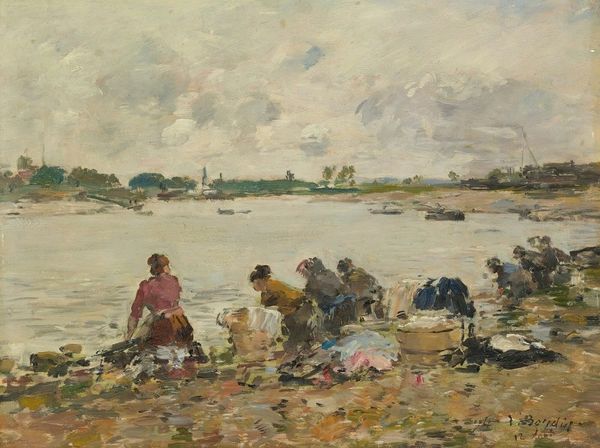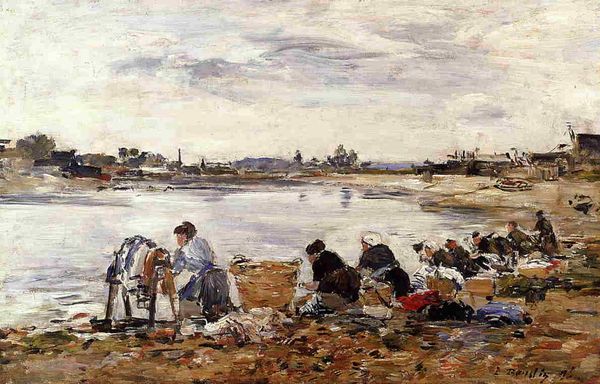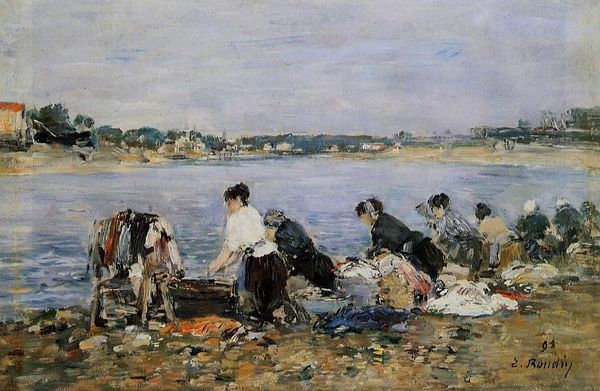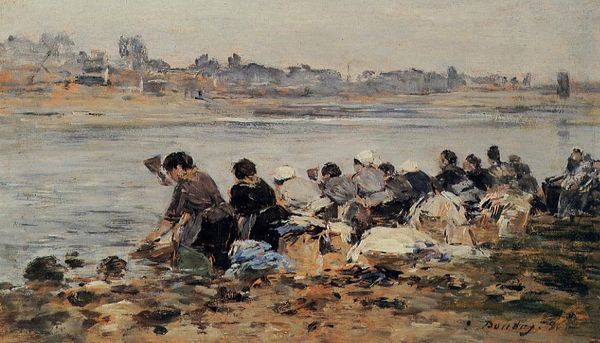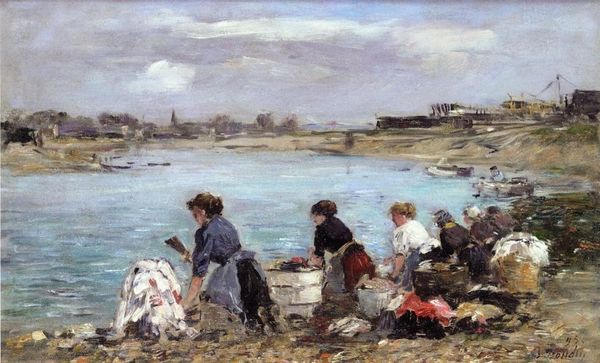
painting, plein-air, oil-paint
#
painting
#
impressionism
#
impressionist painting style
#
plein-air
#
oil-paint
#
landscape
#
river
#
impressionist landscape
#
oil painting
#
seascape
#
genre-painting
Copyright: Public domain
Eugène Boudin painted 'Laundresses on the Banks of the Touques' with oil on canvas. In the 19th century, the art world in France was becoming increasingly interested in depictions of modern life, in which this artwork partakes. Boudin here captured a scene of working-class women engaged in the daily labor of washing clothes. The image subtly creates meaning through its visual codes, referencing the economic and social structures of the time. The Touques river was a common place for laundering in France, and Boudin was deeply influenced by the socio-economic realities of the time. Boudin also explored the politics of imagery by depicting the lives of working-class women. Such art provided an implicit commentary on the lives of those outside the upper classes of French society. The historian’s role is crucial for grasping how art is contingent on social and institutional contexts. Resources such as archival records, social histories, and critical analyses can help us better understand the public role of art and the social conditions that shape artistic production.
Comments
No comments
Be the first to comment and join the conversation on the ultimate creative platform.
